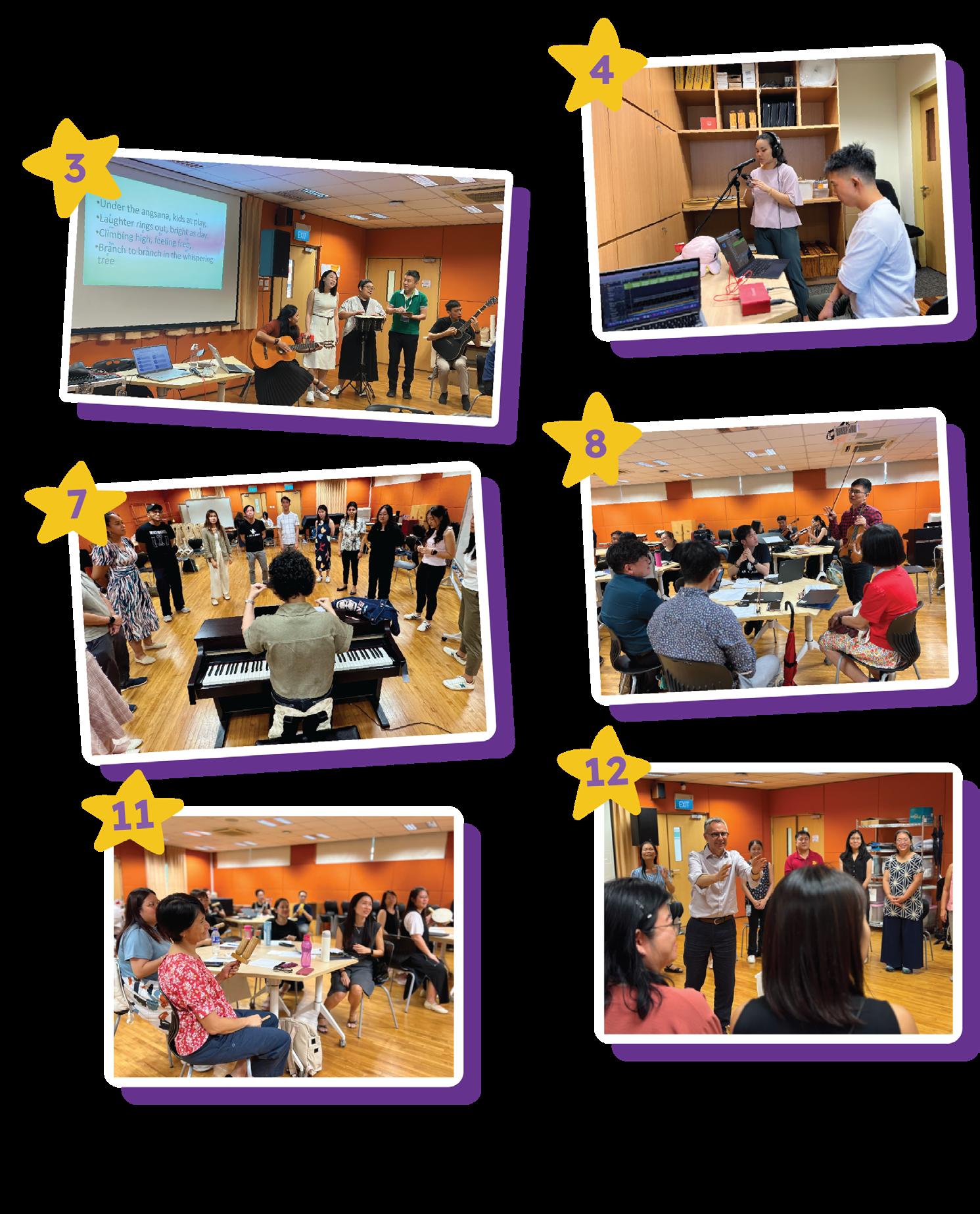Learning in Communities STAR Highlights Leading with Communities


Learning in Communities STAR Highlights Leading with Communities


08 Learning Music in Communities
10 What will happen if we create a pyramid of ‘Engage, Enrich and Excel’?
13 The Power of Pop
18 The Ins and Outs of Networked Learning Communities
20 Why be part of a Networked Learning Community (NLC)?
23 Jamming on Ideas: Collaborative Reflections

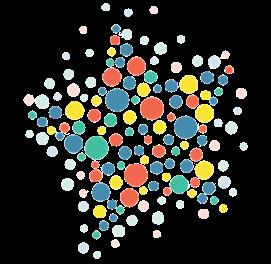
“How do we sustain and help each other in the community given the turbulent and changing world?”
“How do we empower ourselves and our students to contribute actively to our community?”
These fundamental questions guide our exploration in this edition of STAR-Post, where we explore how music educators are building and nurturing communities of learning that empower both teachers and students to contribute meaningfully to their professional and learning environments.
In light of today’s global climate, it is essential for educators to pursue continuous growth, both professionally and personally. Professional learning not only inspires innovative pedagogical approaches and strengthens teaching identity, but also invites a deeper, more metacognitive mode of thinking that enriches teaching and learning. Research shows that professional learning communities, such as Networked Learning Communities (NLCs), foster deeper learning, greater teacher agency, and improve instructional practices (Stoll et al., 2006; Lieberman & Mace, 2010). Through shared reflection and meaning-making, participants in NLCs draw from diverse experiences and collective wisdom to generate deeper understanding, support one another’s growth, and contribute meaningfully to the fraternity.
Our exploration unfolds across two key themes: “Learning in Communities” and “Leading with Communities”, both of which are transforming music education in Singapore’s schools by fostering deeper professional growth and improving student engagement.
The first section delves into the heart of classroom practice: teachers are reimagining traditional pedagogical approaches through non-formal teaching methods and authentic musical experiences. It explores innovative ways of facilitating community music-making in the classroom, fostering collaborations among different communities, and creating a sustainable whole-school approach to learning music. These initiatives demonstrate how shared musical experiences can break down traditional hierarchies and create spaces for genuine creative partnership, leveraging the community as a valuable resource for educational outcomes.
Our “Leading with Communities” section illuminates the vital role of Networked Learning Communities (NLCs) in professional learning. Through the lens of the SOLO Taxonomy NLC and other collaborative initiatives, we see how teachers are moving beyond isolated professional learning to create sustained, meaningful learning partnerships. These networks facilitate deep pedagogical discussions, collaborative problem-solving, and the sharing of innovative teaching strategies that directly impact student learning outcomes. The ripple effect of these
professional learning communities extends to student achievement, with evidence suggesting that teachers are better equipped to foster student engagement and critical thinking. Particularly inspiring is how these collaborative networks contribute not only to teachers’ professional growth but also to their personal wellbeing.
As we navigate the future of music education in Singapore, these collaborative approaches become increasingly vital. The interconnected nature of these communities creates resilient support systems that help educators adapt to changing educational landscapes while maintaining teaching excellence. These networks prove particularly valuable in times of change, offering both practical support and emotional sustenance. Whether through structured NLCs or innovative classroom practices, we are witnessing the emergence of more connected and community-oriented approaches to music education. These interactions reaffirm our sense of purpose, reinvigorate our passion for teaching, and support emotional resilience in response to the demands of professional life.
This issue of STAR-Post serves as both a celebration of existing communities and an invitation to build new ones. It showcases how community-based approaches are reshaping music education, creating more inclusive, dynamic, and responsive learning environments. It challenges us to think beyond traditional educational boundaries and embrace the rich possibilities that emerge when we learn, teach, and lead together. Through these collective and collaborative efforts, we build a dynamic and resilient community of music educators and students, creating harmonies that resonate far beyond our individual classrooms.
We wish you an enjoyable read and hope that the upcoming semester is filled with opportunities to continue to build our communities and flourish together!
Lee Ley Har Deputy Director, Music Singapore Teachers' Academy for the aRts
Our Music syllabus envisions music education as a means to enable the “sharing of feelings, ideas and experiences” at the individual level, and “strengthen cultural identities, foster social cohesion, and form national identity” at the community level (Student Development Curriculum Division, 2022, p. 4). This purpose of music education can be realised through Vygotsky’s social constructivist approach (1978), where knowledge is actively built through experience and social interaction rather than passively received.
Research shows that when students learn music in communities, they develop both competence and confidence simultaneously (Blair, 2009). This development may occur through:
Peer support and collaboration
(e.g. more experienced students mentoring peers in ensemble settings)
Authentic musical experiences (e.g. creating music for authentic, realworld scenarios)
Opportunities for creative expression (e.g. students practice adaptive thinking by reimagining popular songs in different genres, traditions or contexts)
Working together to conceptualise a musical product (e.g. groups collectively deciding on performance interpretation)
These community learning experiences directly support the 21st Century Competencies framework’s emphasis on Communication, Collaboration, and Information Skills. Collaborative music-making helps students “negotiate meaning” through shared musical decisions, from choosing dynamics to structuring performances (Partti & Westerlund, 2013).
In constructivist music classrooms, learning can happen through:
Active engagement with musical experiences (e.g. students exploring different ways to arrange a familiar melody using classroom instruments)
Collaborative meaning-making (e.g. groups creating soundscapes to accompany silent film clips, discussing how major and minor tonalities affect mood)
Social interaction and peer learning (e.g. students teaching each other instrument techniques they have acquired)
These ideas also support our wider goal in developing active contributors who can work effectively in teams.
Our students often look to their teachers for guidance as the knowledgeable others who are perceived as better-skilled and more experienced in the craft that they are learning. As such, teachers play a crucial role in facilitating the students’ learning. However, not all learning decisions have to be teacher-led; the teacher could invite students to contribute by making musical decisions in a classroom creation activity, or even in some aspects of the learning objectives, so long as they are aligned to the learning intent.
Non-formal teaching approaches complement formal music instruction by emphasising learner agency and authentic musical experiences.
Non-formal music learning environments allow students to:
Direct their own learning paths
Learn through exploration and discovery
Learn and construct ideas through social interactions
Develop musical identity through social interactions
Connect classroom learning to real-world musical practices (Chua & Ho, 2013; Higgins, 2015; Lonie & Dickens, 2016)
This approach also aligns with our goal of developing the students’ ability to create, perform, and respond to music in meaningful contexts.
One non-formal music teaching approach that teachers could try is to start with a piece of music or song that students are familiar with. Together, the class makes decisions about how the different musical layers could be modified to create a new arrangement of the music. A possible decision is that the supporting percussion groove could be modified first (or added, if there were none). Then, the melody could be altered or improvised to reimagine musical possibilities. When students feel more confident, the teacher could suggest alternative chord progressions or tonality to explore different feelings and moods.
Another possible non-formal music teaching approach is to begin with a simple musical idea (e.g. a two-note melody) and develop that idea. Students can be guided to explore how the melody could be varied, such as on different beats, lengthened, shortened, or even transformed into another idea. A whole arrangement can then be built around these musical ideas and incorporate different ideas and opportunities for improvisation.
This short example gives rise to several musical ideas that can be explored:
It is also worth noting that musical decisions are often influenced by the wide music and cultural experiences and preferences of our students. This may also mean that a musically-versatile teacher may find it more comfortable to facilitate nonformal music-making sessions with their students.
Similarly, this example allows our students to exercise important musical skills:
This list is non-exhaustive, and the possibilities are plenty.
Constructivist teaching in our music classrooms can develop greater student voice and student ownership, leading to a more fulfilling teaching and learning experiences for both teachers and students. Teachers can explore similar approaches by:
Providing opportunities for students to partake in and lead in making musical decisions, creating, and performing music
Establishing collaborative composition projects where students negotiate musical decisions and share creative control
Creating a positive classroom culture where students can explore musical ideas freely and exchange feedback with peers (Lonie & Dickens, 2016)
Constructivist teaching does not mean abandoning structure — rather, it means co-creating frames and schemas where students can actively construct their musical understanding through meaningful experiences and social interactions. It can foster a more student-directed and inclusive classroom where students are valued for their contributions. It can lead to more growth for both teachers and students alike and better achieve the purpose of music education — of developing individual expression and growing identities and communities.
Inspired by insights from Lucy Green’s ideas on informal learning (2008), three educators from Yuhua Primary School, Celeste Chen Wei, Hanis Binte Rahmat, and Chen Ziwei Joyce collaborated to develop the school’s Learning for Life Programme (LLP) via the Engage, Enrich, and Excel (E3) approach whereby music and the performing arts are the core of the programme.

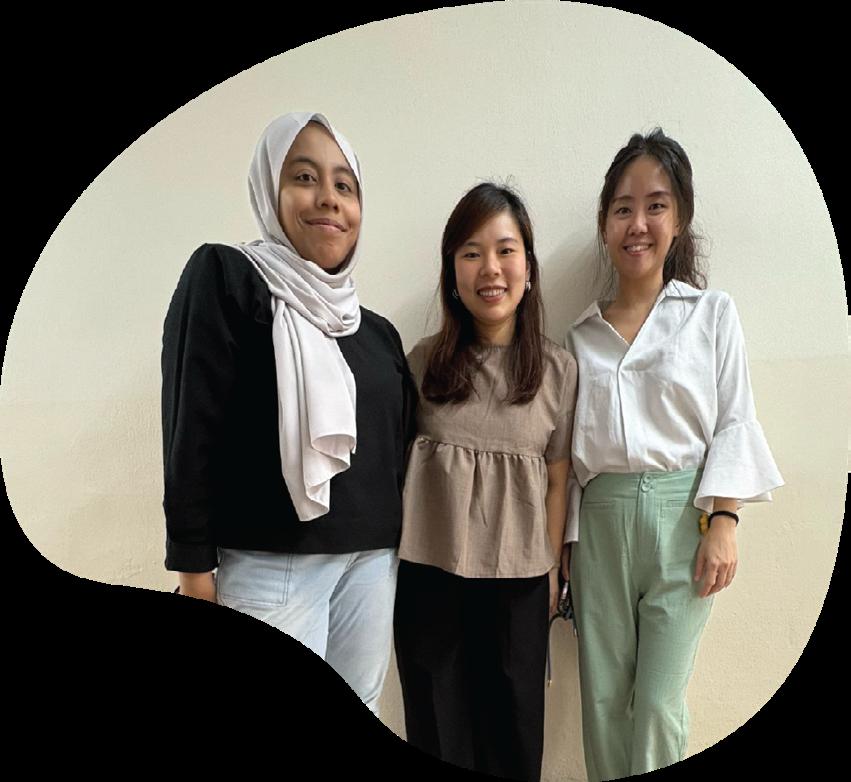
Hanis, Celeste, and Joyce collaborate at Yuhua Primary School
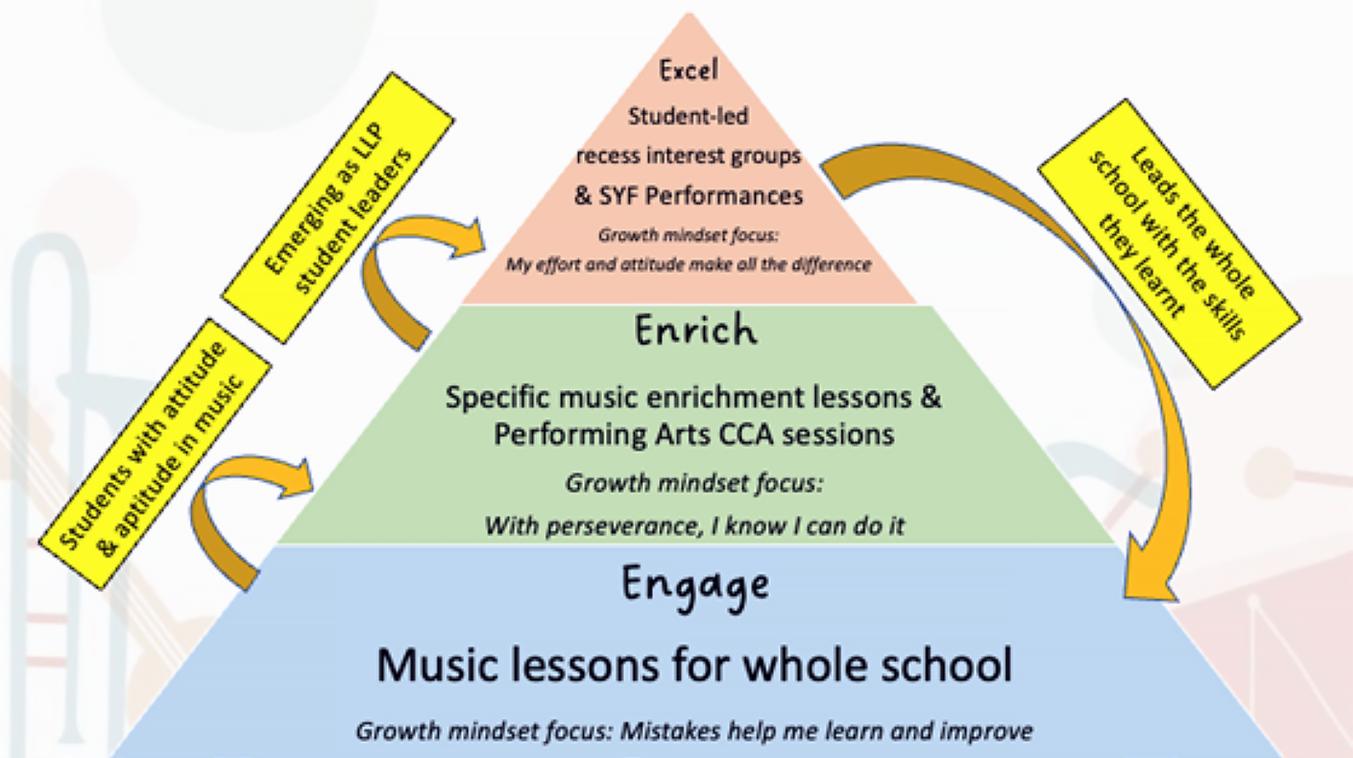
The
Engage,
The E3 approach features a "by students for students" strategy that encourages confidence in self-expression and cultivates a bold and experimental outlook. At the same time, it is conceptualised to develop the students’ character and leadership.
At the first “Engage” tier, Celeste, Hanis and Joyce sought to engage all students by encouraging them to take charge of their own learning in music lessons — playing an active part rather than passively following instructions. By doing so, they help bring to life their students’ innate passion and curiosity to learn, to internalise important character values and skills for life, and to think critically before making decisions.
At the second “Enrich” tier, the teachers sought to engage students who are capable of sharing and exchanging musical ideas and skills with others in a personal, relevant, and effective way to help in teaching the keyboard and ukulele to their peers. They helped to meet the learning needs of their classmates in creative, relevant, and winsome ways. Through these “enriched” students, many more students were able to grow in their musical learning. These students further contributed to the school by leading recess activities and school assembly. They also had opportunities to enrich the community through Values-in-Action (VIA) projects, such as visits to kindergartens or the school’s Open House, where they performed music and taught younger children how to make music and play instruments.

Yuhua Primary School students spread the love of music in the community
With the intent of developing the students’ leadership capacity, the third and topmost “Excel” tier provides opportunities for students who demonstrate exceptional passion, interest, talent, and expertise in the arts to grow. The teachers are there to guide and cultivate them to flourish in an environment that is artistically supportive and conducive. These students’ efforts and attitude make all the difference in their full development as budding artists.
To structure and track the students’ learning journey over their years at Yuhua Primary School, the LLP team developed a special booklet as a crucial resource for students. This booklet features self-assessment sections, allowing students to evaluate the growth of their skills and their progress. It encourages meaningful reflection on improvement areas while aligning each student’s growth with the school’s values.
As Celeste (Subject Head, Aesthetics) so aptly puts it:
“We
hope that the musical learning of students is not just contained within classrooms.
We hope they do
not just stop at learning the ukulele or keyboard as a skill, but as a tool to build their own leadership, collaboration and communication skills, problem solving abilities, and having empathy for the people around them.”
What empowers the Engage, Enrich, and Excel approach to flourish is how Celeste, Hanis, and Joyce dared to take calculated risks and to experiment with new ideas and possibilities. The common purpose that binded them together is their common passion for positive education and the growth mindset they share.
Hanis, a mathematics teacher, teamed up with music teachers Celeste and Joyce. This blend of disciplines and personal backgrounds made their collaboration uniquely interesting and highly productive, as each contributed distinct perspectives.
Indeed, the collaboration between Celeste, Hanis, and Joyce showed how teachers within a school can work together to greatly enhance their students’ learning. They shared with other teachers about their Learning for Life Programme (LLP) and their Engage, Enrich, and Excel (E3) approach at the Teachers’ Conference and ExCEL Fest 2025 (TCEF2025).
Over the years, a song becomes popular when it captures the vibrant rhythms of the times, when the flow of its melody reflects the ups and downs of life, and when its lyrics resonate with our deepest concerns and wildest dreams. When a great pop song captivates us, it refuses to let go, because that is how it is crafted.
Music teachers also use pop music, not just for its irresistible allure and appeal, but to target key educational purposes. At Broadrick Secondary School, music teachers Phyllis Loe and Joanne Ler incorporated a 14-week pop band module for secondary two music lessons, where students form “bands” to create “covers” of pop songs.
Phyllis and Joanne inspired their students by playing along with them, exemplifying and leading students by their own immaculate musicianship. To guide their students, Phyllis and Joanne also provided close consultation for each band, designing the essential resources they need to create pop covers, such as chord charts, lead sheets, and separate instrumental/ vocal tracks.
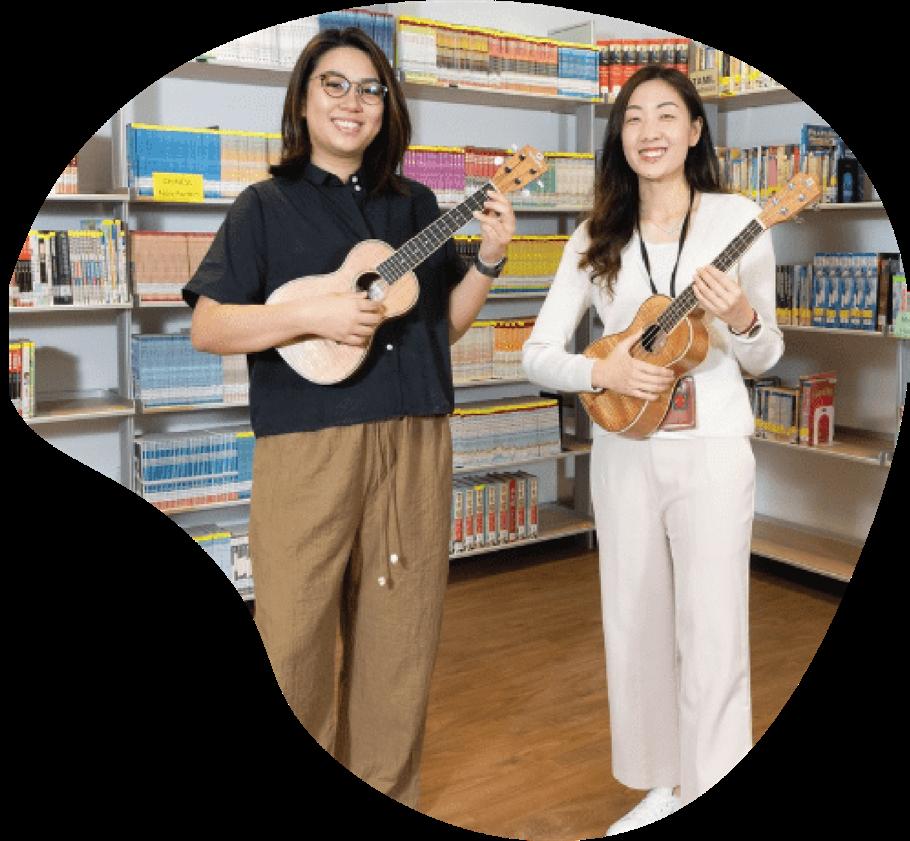
Collaborating together in a band setting, students apply what they previously learnt about playing classroom instruments like the keyboard, percussion, and guitar.
Through the interaction of different instrumental timbres, students discovered the important role each band member plays in creating the music and how each pop band became a community of music-making in itself.
Phyllis and Joanne, Broadrick Secondary School Music Teachers
Watch the pop band performance at Broadrick Secondary School
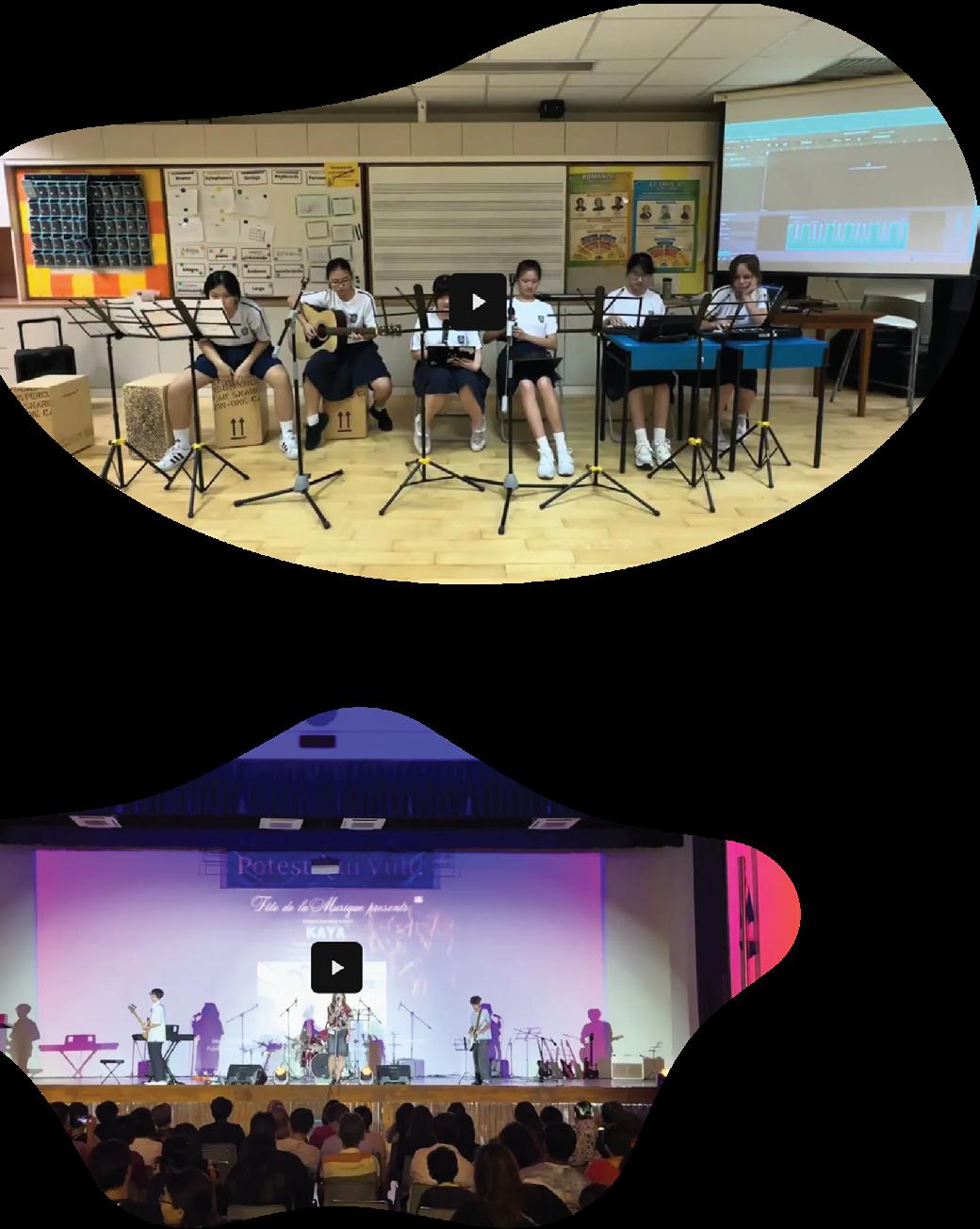
Watch the pop band performance at Broadrick Secondary School
Capitalising on the students’ intimate hands-on knowledge of the songs, Phyllis and Joanne then used the pop songs to teach and illustrate key musical elements like tempo, rhythm, harmony, expression, and pitch, in ways that are vivid, striking, personal, memorable, and relevant.
In their teaching process, Phyllis and Joanne identified students with the passion and capability to go further, engaging these students to compose original songs and to submit them for the Singapore Youth Festival (SYF) Youth
Their pop band module is set to culminate the following term in a class performance and reflection by each pop band. Phyllis and Joanne also linked up with teachers in other schools, like Victoria School and St. Patrick’s School, so students can share their music with other students, and learn from the music of other pop bands. Thus, they have enlarged their students’ musical learning to the wider community of schools.
At Pasir Ris Secondary School, music teacher Fam Hui Yuen is not only the teacher-incharge of pop band, 22.22, she is also the band’s bass player. As Hui Yuen shared,
“The name ‘22:22’ was born from the moment the pop band WhatsApp group chat began — at exactly 22:22. That chat quickly became a space of spontaneous creativity and collaboration, where every member had a voice in shaping the band’s direction, from song choices and genre to arrangements and performance attire.”
“While the group was largely studentled, the teacher played a supportive role by securing performance opportunities, offering constructive feedback, providing access to instruments, and coordinating rehearsal times, allowing the band’s unique identity to flourish naturally.”
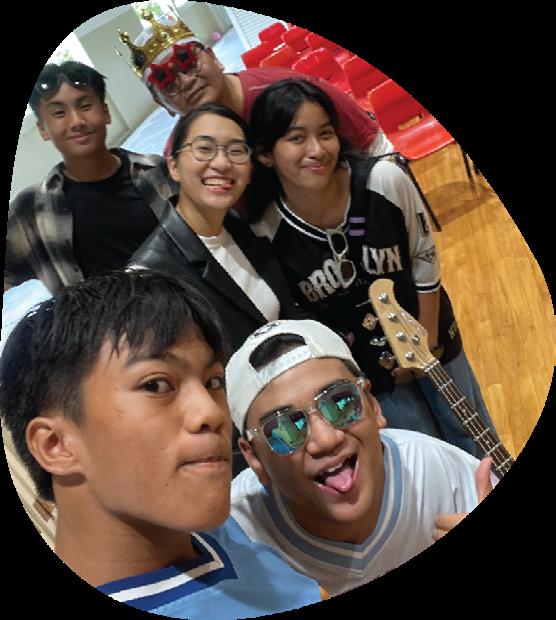
and pop band 22:22 at Pasir Ris
Secondary School’s Teachers’ Day Concert
22.22 regularly performs for the school’s Graduation Day and pop-up cafés, as well as its Teachers’ Day and Chinese New Year celebration concerts.
Hui Yuen’s pop band strongly advocates for music’s overarching universality — how each human being needs music in their lives. Therefore, 22.22 not only includes students from the G1, G2, and G3 subject levels, but it also embraces other subject teachers and an Operations Support Officer (OSO) from the school community, who play different instruments in the band.
What’s truly remarkable about 22.22 is how Hui Yuen leverages the band for more than just music-making. She uses it to foster connection and elevate spirits within the school community. As the band’s student pianist testified:
“We bonded through our love for music... It felt nice to be treated like a bandmate rather than a student. Before, I hated the piano. But with the band, I could showcase my skills. My love for the piano grew, and I’m now thinking of continuing my grade exams after O-levels.”
Another student band member shared:
“There was one performance where I felt I didn’t do well. I felt really down. But my bandmates, Ayden, Nadia, Eugene, and Ms. Fam were always there to cheer me up.”
Fellow band drummer and teacher who teaches Biology and Chemistry reflected:
“Performing in front of the school strengthened our relationships with other teachers and allowed us to collaborate beyond our professional roles.”
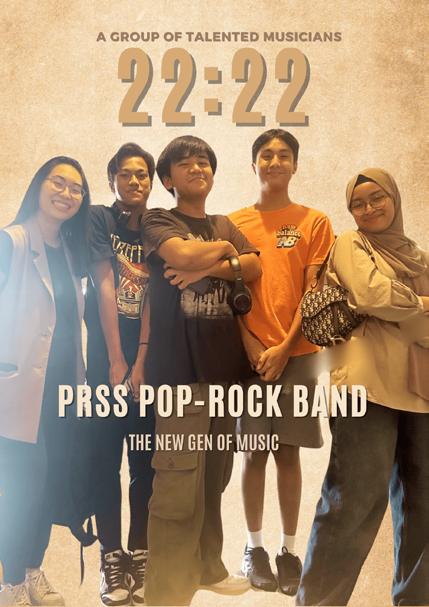
Music Teacher
Hui Yuen (left) and pop band 22:22 poster
At Pasir Ris Secondary School, Hui Yuen uses 22.22 as a bridge to connect with students who might otherwise be unreachable. She also uses 22.22 as a platform where students discover their strengths, build self-confidence, and feel empowered to make decisions.
Likewise, at Broadrick Secondary School, Phyllis and Joanne incorporated a pop band module in their music curriculum to show students how to collaborate and develop respect for each other and for themselves.
As Phyllis, Joanne, and Hui Yuen show, the power of pop bands is limitless in how teachers apply it to educate students. These teachers use pop bands in their own effective manner to impact students in unforgettable ways and create communities where students feel a sense of belonging and play an important part, inviting them to continue their lifelong adventure of learning about music and life.
Networked Learning Communities (NLCs) are:
“ ...teams of teachers from different schools working and learning collaboratively to examine and reflect on their practice. By engaging in purposeful and sustained developmental activities together, they learn from one another, with one another, and on behalf of others.”
(Jackson & Temperley, 2007)
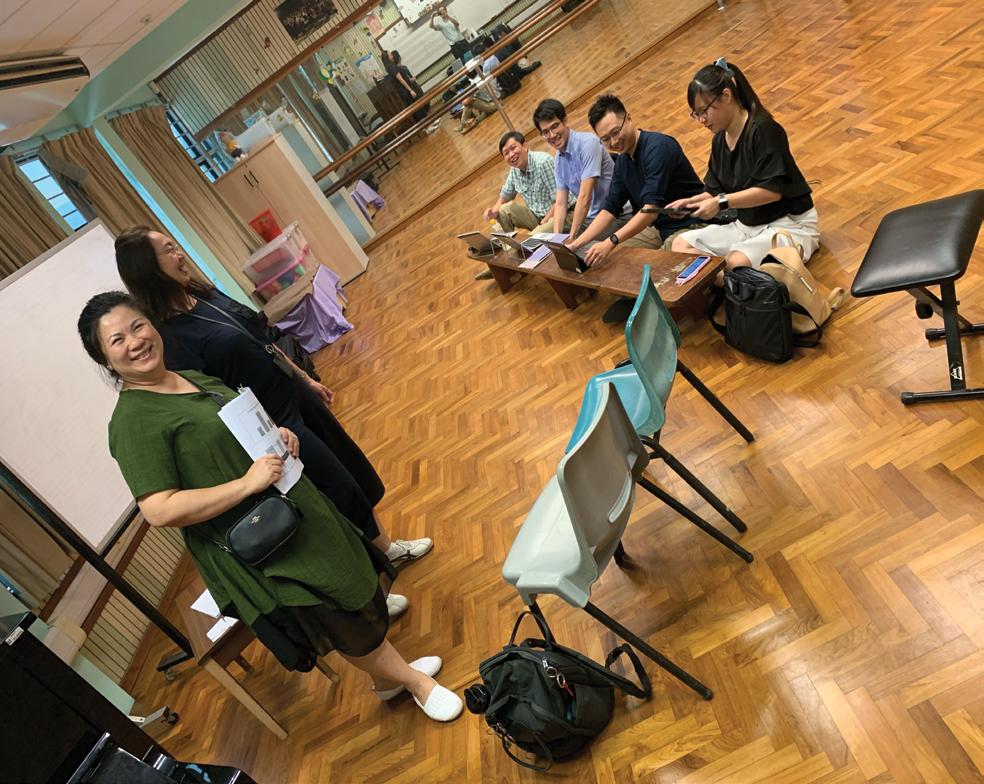
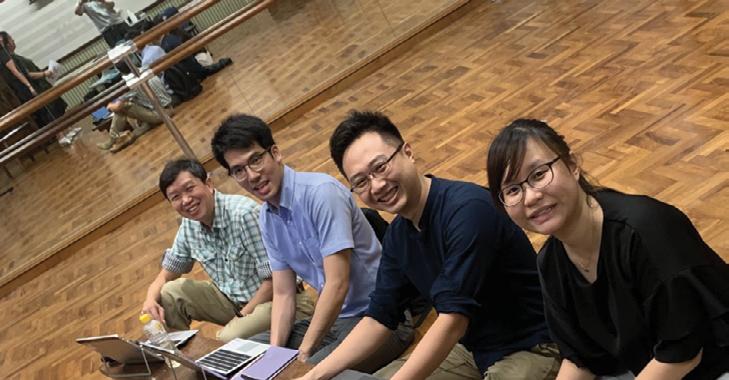
West Zone Songwriting NLC at Lianhua Primary School
NLCs are vibrant because of how they bring together teachers from varying schools, and the lively sharing of ideas that ensue. This vigorous exchange widens the perspective of every teacher who participates. It hones and sharpens their array of teaching tools by hearing other teachers share about strategies that work in their classes. like designing music assessment, music improvisation, and songwriting. Ultimately, each teacher leaves an NLC with fresh ideas under their belt and new pedagogies to apply in their own teaching. What validates an NLC and makes it practical and credible is that the learning is relevant and applicable in actual classroom situations. The ultimate focus of NLCs is what works in the actual music classroom, what does not, and why.
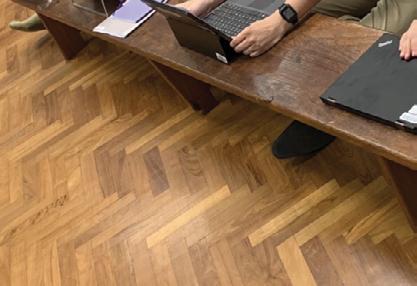



Music Teachers from different schools exchanging ideas at the West Zone Songwriting NLC
In Singapore, music teachers are a small but diverse community, making NLCs crucial for professional growth. These NLCs foster deep engagement: participants come prepared, delving into assigned topics, readings, or practices with rigour. This thorough approach empowers teachers to discuss issues vibrantly, ensuring they gain valuable learning from each session.
An NLC can be as compact as three or four teachers, or as large as 20 teachers or more, depending on the NLC’s demand and the optimum size for the activities to be effective. Each NLC requires a leader (or leaders), together with members, to co-construct knowledge as they co-design each session, its structure, and their sequence. It is the role of the NLC leader(s) to ensure that the members’ perspectives are respected and valued, discussions are on track, and that pedagogical concepts shared are sound and based on shared values and beliefs. NLCs tend to be led by Senior Teachers (STs), Lead Teachers (LTs), and Master Teachers (MTTs).
To initiate an NLC, the NLC leader(s) must first obtain clearance from the School Leader (SL) of each potential NLC participant through an official email invitation. To give permission, the SL may need to know:
The timing and number of NLC sessions and their duration
What each participant stands to gain from the NLC
How the NLC fulfils the school’s educational goals, and involvement in the NLC will not compromise school duties.
Another point to note is the location of the NLC sessions. Does that NLC involve schools within a cluster or zone, or is it island-wide? What is the travelling time for each teacher? To attract teachers, the NLC must be lengthy enough in duration to be substantial, but not so long and tedious as to demand a commitment that teachers cannot realistically keep.
To minimise travel time for teachers, it is possible to conduct some NLCs online. However, if the topic involves collaborative music-making, physical response, and peer interaction, it is then necessary for such NLC sessions to take place face to face.
NLCs are barometers that indicate the most pressing needs in schools. It is hoped that more music teachers initiate and get involved in NLCs to share with one another about how larger educational goals translate to music teaching for them, and to discuss concerns and solutions they have in common. In the longer term, NLCs can help our teachers flourish in their respective capacities.
Lead Teacher Jessica Chaw (Edgefield Primary School) and Senior Teacher Chan Zhaoli (Xishan Primary School) believe that working with one another in a collaborative community through an NLC can foster a teacher-led culture of professional excellence, encourage personal growth as an educator and enjoy professional camaraderie. As such, the teacher-leaders started an NLC on the topic of SOLO Taxonomy. They wanted to share with other music teachers about their knowledge of this topic, to elicit a lively discussion on these important issues, to develop a deeper understanding of the role of music assessment and to equip teachers with a wider array of teaching tools they can use in their music classroom. In short, Jessica and Zhaoli shared that:
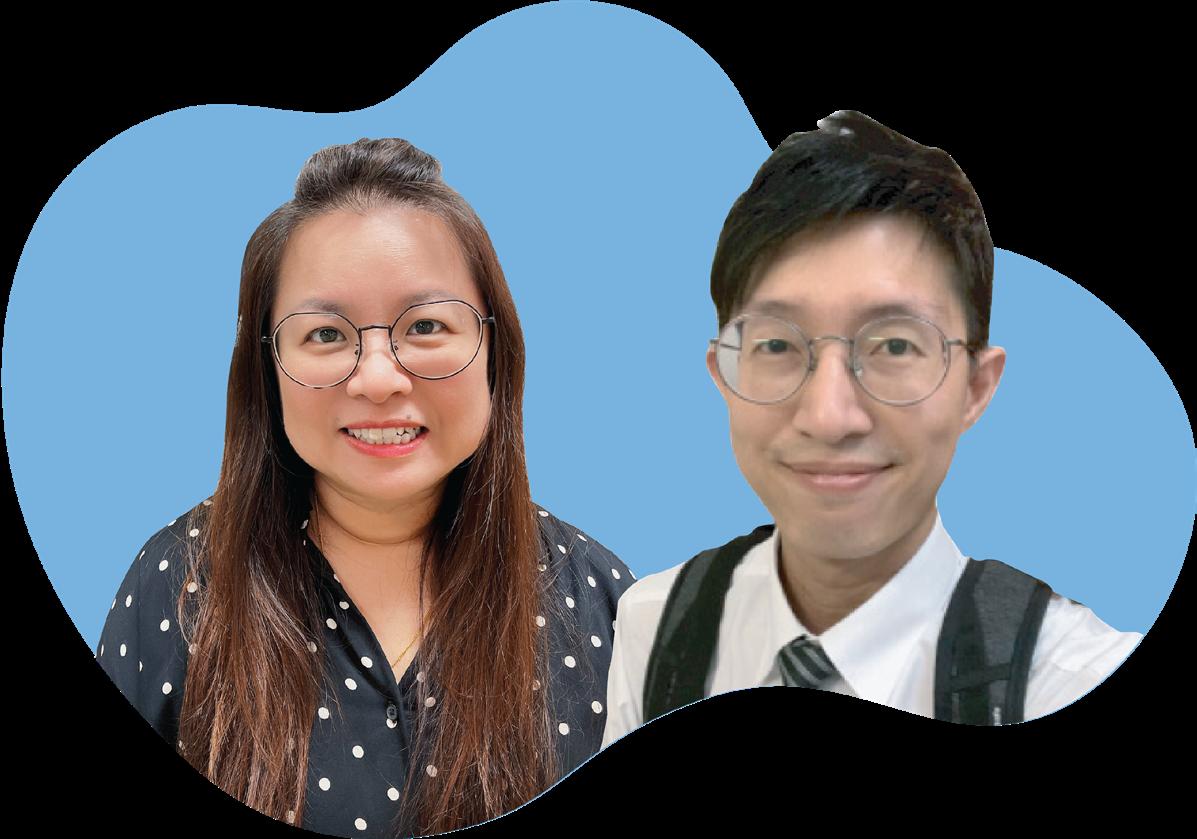
“The SOLO Taxonomy framework is based on the idea that there are different levels of understanding that students can move through by engaging with increasingly complex tasks and ideas.”
Their NLC began with an asynchronous self-learning session on the Student Learning Space (SLS), which emphasised how well-constructed rubrics clarify learning targets for both teachers and students and how accurate assessment helps students understand their current progress, identify achieved goals, and determine next steps. Thanks to the NLC’s flexible, self-paced learning format, teachers could carve out their own time and space to grasp the critical role of assessment within the main pillars of musical learning: responding, creating, and performing. The provided online resources and guiding questions facilitated independent study for all participants. In total, 12 teachers from the North 2 and 3 clusters joined this NLC.
Jessica and Zhaoli facilitated interactive online discussions, sharing their best practices in implementing Solo Taxonomy in music assessments. This sharing of real-life classroom applications, i.e., showing how solo taxonomy applies to the students’ learning to play the ukulele and cajon, generated pedagogical discussions among the teachers. The exchange of experiences created professional camaraderie as like-minded educators shared varied perspectives.
Through their SOLO Taxonomy NLC, Jessica and Zhaoli demonstrated that deepening one’s pedagogical understanding and professional learning is not a static event but a dynamic and continuous process. They are an inspiration, encouraging other teachers to share relevant teaching approaches through forming their own NLCs and other sharing platforms, showing how their teaching techniques apply practically in a living music classroom context. Beyond pedagogical growth, participation in such collaborative communities strengthens teachers’ professional identity and enhances their well-being by creating meaningful connections with like-minded educators who share similar challenges, aspirations, and dedication to music education.
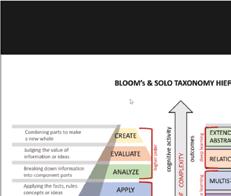
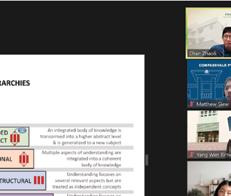
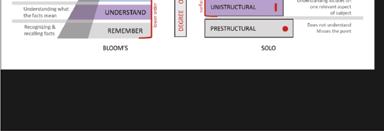

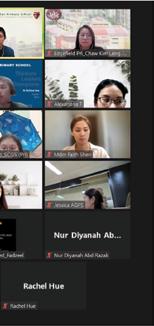
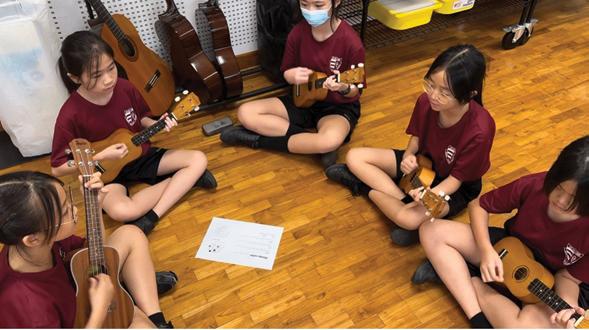
“How do we grow ourselves professionally and personally? What are other professional learning opportunities that we can leverage on to grow ourselves other than workshops or online MicroLearning Units (MLUs) on OPAL2.0? Could professional learning be more collaborative in nature? What does this look like?”
Usually, when considering professional learning and growth, workshops and courses are often the forms of learning that come to mind. However, this need for growth can also be effectively supported through the participation in Networked Learning Communities (NLCs), which foster collaborative learning, shared expertise, and sustained professional engagement. A trio of primary school music teachers have shown that, indeed, learning could be more collaborative with more exchanges in knowledge and experiences. Eng Huiling Jasmine (Tanjong Katong Primary School), Long Peizhen (Haig Girls’ School), and Allen Losey (Fengshan Primary School) promoted a playful collaboration through enhancing the collaborative culture and play-based learning among Primary School Music Teachers in the 2024 Critical Inquiry (CI) NLC.
In this CI NLC project, Jasmine, Peizhen, and Allen embraced the power of play and discovered new ways to make learning engaging and meaningful for their students. Their collaboration was rooted in a spirit of trust, openness, and shared purpose. By stepping into each other’s classrooms to observe and teach, they gained valuable insights into the learning process from multiple perspectives. This open exchange fostered a deeper appreciation of each other’s teaching approaches and created opportunities to collectively refine their practices. Through deep reflection, adaptation, co-creation of resources, and reimagining the student learning processes together, they were able to transform how they engaged students with music. This collaborative journey not only strengthened their own professional growth, but also enriched the learning environments they designed for their students.
Effective teacher professional learning comprises of collaborative and collective learning (Evert & Stein, 2022). As learners develop deeper understanding when they externalise and articulate their learning (Sawyer, 2014; Vygotsky, 1978), NLCs provide the opportunities for social interactions where teachers can share expertise, seek assistance, and inform their practice (Lieberman, 2000). This exchange of personal, musical, and pedagogical insights enriches our network, fostering a culture of mutual support and care.



For Jasmine, her motivation for being a part of the CI NLC was based on two vital questions: (1) “How can I harness the power of play in my music lessons with upper primary students?”, and (2) “What forms might play take within our ukulele module?”. Through lesson observations of another teacher in action, she was able to reflect deeper, rethink, and refine her ukulele module plan for her Primary 6 students. Instead of having a structured module, Jasmine revised her approach to a flipped teaching model that emphasises exploration and creativity in her students. She realised that while the curated repertoire of songs provides a valuable resource for her students, it does not inherently invite collaboration or active participation. Jasmine saw higher levels of engagement and enthusiasm in her students as they explored and discovered new songs to learn on the ukulele, independently, on the Student Learning Space (SLS).
Jasmine shared…
“By integrating play into our ukulele module, I hope to inspire a deeper passion for music and foster a community of learners who feel empowered to express themselves. In the midst of our busy work schedules and the many hats we put on as educators, being a part of an NLC allows me to dedicate a portion of my professional journey of refining my craft and rekindling my own joy as a music educator.”
Sharing similar aspirations, Peizhen joined the NLC with the motivation of co-creating music resources with fellow colleagues to enhance the students’ learning. In her playful exploration of teaching students from another school, she realised that learning through play was not about chaos or lack of structure, but rather, it was about creating space for musical discoveries. Through moments of reflection and adaptation, Peizhen saw the deeper value of this collaboration among music educators. With constant encouragement and constructive feedback from Allen and Jasmine, they have built a collaborative network that enabled the refinement of teaching methods and practices.
Peizhen reflected…
“It made me realise how important it was to step into someone else’s classroom and truly understand their unique challenges and triumphs. It deepened our collaboration, made it richer, and more authentic. Being part of the NLC has also made me more reflective, helping me become more intentional about why I teach a certain way, not just how. The discussions pushed me to ground my approaches in theory, research, and evidence of student learning. Personally, the NLC experience reminded me that we rise by lifting others. When we invest time and care into helping a colleague succeed — whether it’s by sharing a resource, offering feedback, or simply being present to listen — we can, in turn, gain clarity, connection, and confidence ourselves. It also showed me that professional growth does not always have to come from formal courses or workshops. It could meaningfully emerge from everyday conversations, shared challenges, and the small wins we celebrate together. Growth does not have to be a solo journey — it can be a shared one.”
NLCs indeed offer a valuable platform for teachers who share common goals, needs, and motivations to connect in meaningful and purposeful ways. Through the social interactions of sharing experiences and exchanging of resources, participants in the NLC will be able to discover and co-construct new knowledge that is both personally transformative and professionally enriching. For music educators, this collaborative learning can inspire innovative approaches to teaching, deepen pedagogical understanding, and ultimately enhance student engagement and learning in music classrooms.
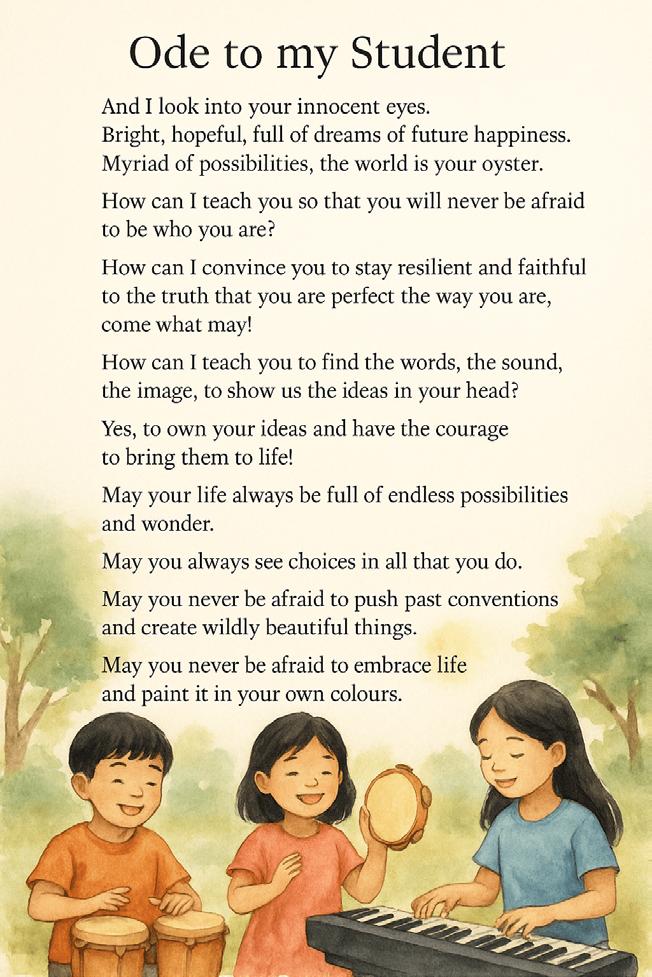
Chan Pei Gee
St. Anthony’s Canossian Primary School
This work depicts the empowerment of a community through the power of education and self-belief. The radiant and nurturing warmth of the sun symbolises the source of creativity and confidence.
- Original text with image generated by ChatGPT

Technology has transformed music education, helping us connect, create, and support each other across different time zones. Like the different layers in a song, our community grows stronger when we lift one another — proving that even when apart, we are never truly alone.

Nadrah Anuar Chongfu School
With the sound and colour of our roots, we empower our community to find strength in heritage, identity in diversity, and connection through the songs, soundscape, and hues of everyday life.
Click here for accompanying video

I use the instrumental lessons (e.g. keyboard and guitar) to foster community musicmaking, with students playing bass lines or chords while I play familiar riffs. This builds engagement, encourages peer support, and creates a positive, collaborative classroom culture.
Catch up with the latest happenings at STAR since our January
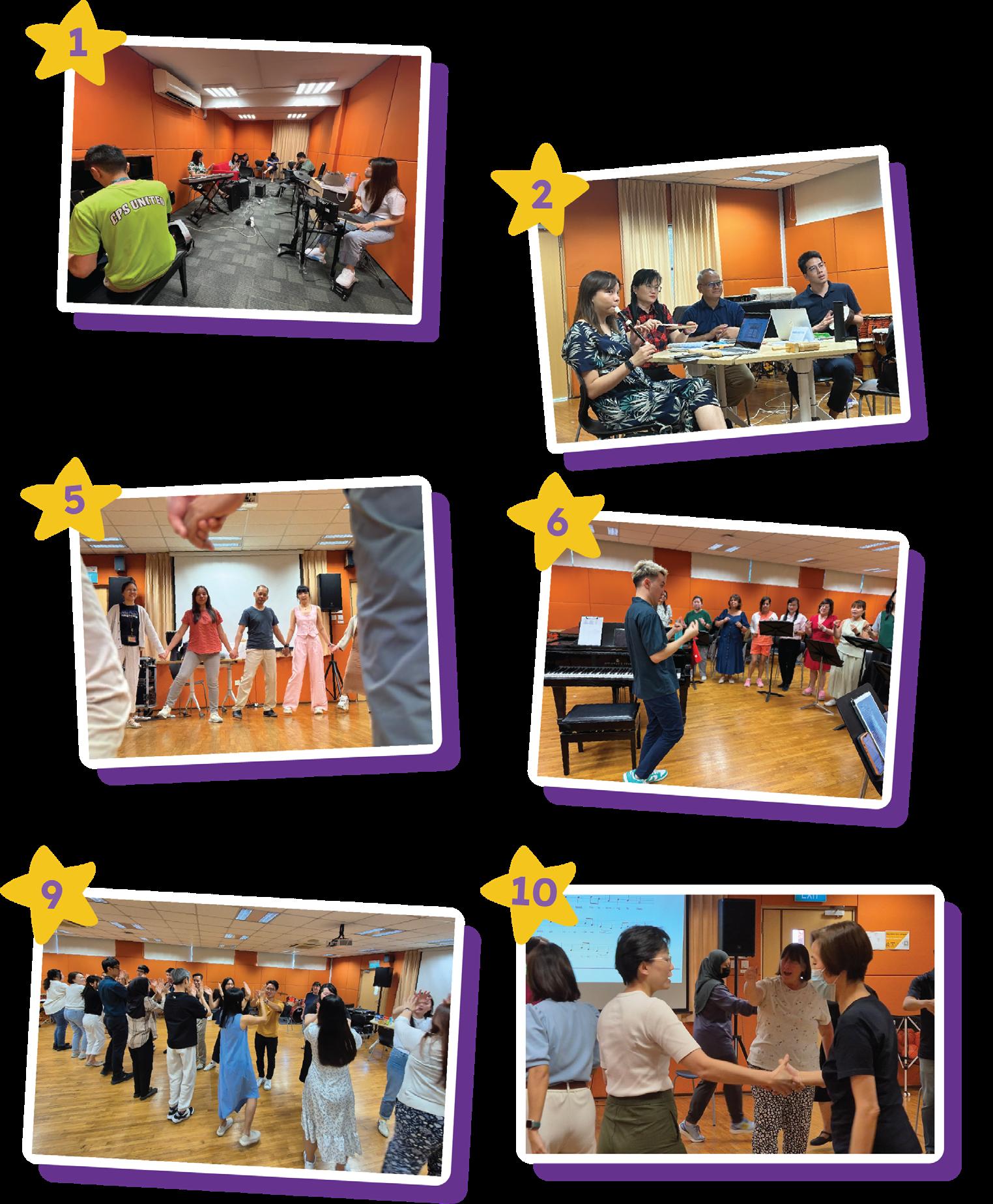
happenings that have taken place
January 2025 issue of STAR-Post!
